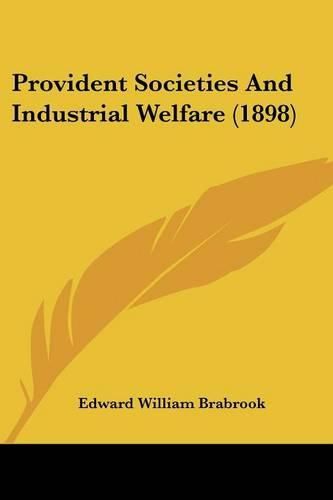Readings Newsletter
Become a Readings Member to make your shopping experience even easier.
Sign in or sign up for free!
You’re not far away from qualifying for FREE standard shipping within Australia
You’ve qualified for FREE standard shipping within Australia
The cart is loading…






Purchase of this book includes free trial access to www.million-books.com where you can read more than a million books for free. This is an OCR edition with typos. Excerpt from book: include Sl large number of children. Of these, 35 in England and Wales had 3,318,942 members and 2,289,858 funds; and eight in Scotland had 556,273 members and 423,356 funds. The total for the United Kingdom (there being none in Ireland) was 43 societies with 3,875,215 members and 2,713,214 funds. The difference between the two classes of societies is marked by the fact that in the ordinary Friendly Society the funds are 5, 85. per member; in the Collecting Burial Society only 14. per member. The total for the United Kingdom of the two classes of societies together was 24,041 societies and branches, having 8,078,816 members and 25,408,253 funds. Chapter IV. Varieties of Friendly Society. Our hypothetical young man will find himself called upon to select the particular society he will join. One consequence of the absolute freedom and voluntariness, which has been shown to be the leading characteristic of the law relating to Friendly Societies, is that each society has been at liberty to organize itself in any manner which has appeared to the members to be most suitable to their circumstances. We have accordingly a great variety of societies. The Royal Commission on Friendly Societies enumerated as many as seventeen classes. It would be outside the scope of this work to express a preference for one class over another, or to recommend one class at the cost of the others, but we may proceed to describe the various methods of management, so as to give the reader the means of exercising a judgment of his own. The oldest and most simple form?the one that shows most traces of continuity with the ancient guilds?is the village club. Meeting for the most part at the village inn?having its box for donations by way of casual relief, and its box with three locks for the securities,…
$9.00 standard shipping within Australia
FREE standard shipping within Australia for orders over $100.00
Express & International shipping calculated at checkout
Purchase of this book includes free trial access to www.million-books.com where you can read more than a million books for free. This is an OCR edition with typos. Excerpt from book: include Sl large number of children. Of these, 35 in England and Wales had 3,318,942 members and 2,289,858 funds; and eight in Scotland had 556,273 members and 423,356 funds. The total for the United Kingdom (there being none in Ireland) was 43 societies with 3,875,215 members and 2,713,214 funds. The difference between the two classes of societies is marked by the fact that in the ordinary Friendly Society the funds are 5, 85. per member; in the Collecting Burial Society only 14. per member. The total for the United Kingdom of the two classes of societies together was 24,041 societies and branches, having 8,078,816 members and 25,408,253 funds. Chapter IV. Varieties of Friendly Society. Our hypothetical young man will find himself called upon to select the particular society he will join. One consequence of the absolute freedom and voluntariness, which has been shown to be the leading characteristic of the law relating to Friendly Societies, is that each society has been at liberty to organize itself in any manner which has appeared to the members to be most suitable to their circumstances. We have accordingly a great variety of societies. The Royal Commission on Friendly Societies enumerated as many as seventeen classes. It would be outside the scope of this work to express a preference for one class over another, or to recommend one class at the cost of the others, but we may proceed to describe the various methods of management, so as to give the reader the means of exercising a judgment of his own. The oldest and most simple form?the one that shows most traces of continuity with the ancient guilds?is the village club. Meeting for the most part at the village inn?having its box for donations by way of casual relief, and its box with three locks for the securities,…